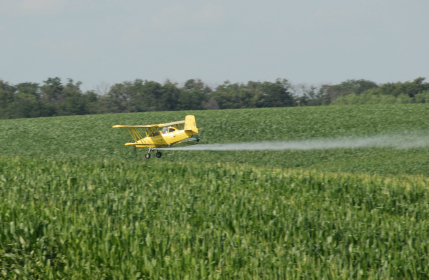Pesticides are chemical or biological substance that kills pests that are not welcomed in crops. They are meant to annihilate anything that harms the crops. It’s used extensively in modern commercial farming to kill insects, weeds, birds, worms and just about any organism that threatens the crops. Pesticides is just an umbrella classification for bactericides, fungicides, herbicides and insecticides.
Given the poisonous and deadly chemicals used in the manufacture of pesticides, it is not meant for human consumption. However, because of the rampant use of pesticides, pesticides find their way into food, causing cancer, damage the nervous system and brain, and even disrupt the immune and endocrine systems. Frequent consumption of foods that contain pesticides causes our hormones to go haywire, and negatively affects the skin, eyes, and lungs.
Just how bad is the extent of pesticides consumption? Statistics show that 20 million American children between the ages of 1 and 5 consume a total of 8 variants of pesticides in just one day. If we do the math, that totals to at least 2,900 pesticides in a year.
The Environmental Working Group, or EWG for short, conducted a study on 42 produce commonly sold in the market. They identified the vegetables and fruits that top the list of pesticide contamination.
- Peach. It’s loaded with the highest amount of pesticide among the 42 fruits and vegetables tested by EWG.
- Apple. Apples are sprayed with Alar. Alar is a chemical that regulates growth. It enables an easier harvest and enhances the color of the apple. In 1989, the government proposed a ban on the use of Alar because it contributes to an excessively high risk of cancer to consumers.
- Sweet Bell Pepper. It can be contaminated with the pesticide Imidacloprid 80% of the time. Imidacloprid is an insecticide that acts on the nervous system of the insects. High dosage of this pesticide may affect children’s brain development.
- Celery. The amount of pesticides present in celery is shocking. Non-organic celery is sprayed with approximately 67 different kinds of pesticide.
- Nectarine. Although nectarines don’t contain much residual pesticides, a total of 33 different pesticides were detected inside some samples of nectarine.
- Strawberries. Non-organic strawberries contain 65 registered herbicides, pesticides, and fungicides. Methyl bromide is usually used as pesticides in strawberries. This chemical is very harmful to other microorganisms as well as the ozone layer. When ingested, methyl bromide is poisonous and damages the nervous system. It is worth noting that strawberries contain lots of residue of this chemical too.
- Cherries. It can be said cherries are 90% pesticide-laden. Cherries grown in the US contains three times more pesticides than the imported ones too.
- Kale. Kale is an excellent source of vitamins and minerals and one of the best sources of Vitamin K. Although kale should top the list of your cruciferous diet, you might just want to swerve away from the conventionally grown ones. A typical non-organic kale contains around 10 pesticides…and that’s after thoroughly rinsing it.
- Lettuce. Lettuce has numerous nutritional benefits, containing high amounts of vitamin A, K, C and folate. However, non-organic lettuce also contains a lot of pesticide residue.
- Imported Grapes. Grape is rich in manganese, health-supportive phytonutrients, carotenoids, flavanols, and have anti-bacterial and hormone regulation properties. But alongside these health benefits is the possibility of ingesting Pyrimethanil when the grape is non-organic. Pyrimethanil is a post-harvest fungicide that is found to be a prevalent residue in imported grapes.
Keeping Away from Pesticides
We need fruits and vegetables in our diet to keep us healthy and strong. It is preferable that we go organic in our choice of produce to avoid ingesting pesticides. However, if that is not possible, there are ways we can limit the amount of pesticide that we and our children ingest. Here are simple tips for you to do after buying your grocery:
- Always wash the produce. Yes, the apple might look clean enough but think about how many hands have picked it up before you finally bought it? Also, consider the fact that pesticide residues were meant to annihilate the pests and it’s definitely not for you to consider as part of your diet.
- You can wash the produce with vinegar-water solution for maximum cleansing effects. Rinsing the produce with vinegar does not affect the freshness of the produce at all.
- For leafy veggies, removing the outer part of the leaves reduces the pesticide residue.
- When preparing food for cooking, skin first before cutting. Peel or skin the produce first and discard the peelings before. Doing so before cutting would eliminate contact of pesticide on your cutting board. There would be less contamination this way.
By observing these few steps diligently, we can ensure that our friends and loved ones will have minimum contact with pesticides. We are also more confident that the foods they are consuming are less likely to be contaminated. With less contamination means healthier foods and reduced toxins and unwanted substances in our body.
Most importantly, if you would like to enjoy the goodness of the 10 Foods that contains the highest amount of pesticides, go organic. By allocating part of your grocery shopping budget to organic food, you can be assured that you will not burn a hole in your pocket and still be wowed with many different varieties of fruits and vegetables.

Leave a Reply to meg goldcamp Cancel reply